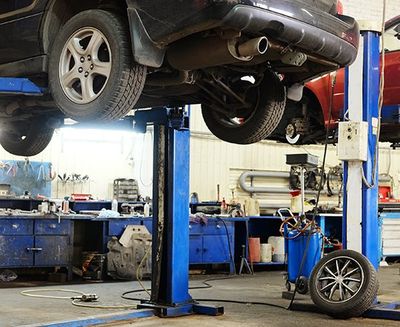Comprehensive Overview to Elevator Equipments and Their Upkeep
Navigating the detailed world of elevator systems and their upkeep is a task that requires accuracy and understanding. From the various sorts of elevator systems in operation to the precise adherence to security policies, the maintenance of these upright transportation devices is a multifaceted endeavor. As buildings skyrocket higher and modern technology breakthroughs, the need for a comprehensive understanding of lift systems ends up being progressively critical. Join us as we unravel the intricacies of lift maintenance, exploring typical problems, finest techniques, and advanced innovations that form the modern-day landscape of vertical transportation.
Sorts Of Lift Solutions
Lift systems been available in numerous types, each designed to fit details building demands and user demands. One of the most common kinds consist of hydraulic lifts, grip elevators, machine-room-less elevators, and vacuum cleaner elevators. Hydraulic lifts are excellent for low-rise buildings and use a hydraulic piston to move the lift car. Traction elevators, on the other hand, are a lot more matched for skyscrapers and utilize steel ropes and counterweights to move the car. Machine-room-less elevators are a space-saving alternative as they do not require a separate equipment room for the elevator equipment. Vacuum cleaner lifts, a much more modern-day technology, usage air pressure differentials to relocate the auto within a clear tube.
Each kind of elevator system has its very own benefits and negative aspects, making it critical for building owners and developers to very carefully consider their certain needs prior to selecting one of the most appropriate option. Aspects such as building height, room accessibility, power performance, and budget restrictions all play a significant duty in establishing the ideal lift system for a specific structure.
Typical Maintenance Issues
Normal upkeep of elevator systems is necessary to guarantee smooth procedure and prolong their life expectancy. In spite of normal upkeep, lift systems can still run into typical upkeep problems that need to be without delay addressed to protect against disruptions in service. Regular examinations and aggressive upkeep can assist identify and settle these typical maintenance concerns before they rise and influence the overall efficiency of the elevator system.
Safety And Security Laws and Conformity
Sticking to rigorous safety and security laws and making sure compliance with industry criteria are vital for maintaining the functional stability of elevator systems. Lifts go through an extensive collection of security regulations to guard travelers, maintenance employees, and the public. Governing bodies such as the Occupational Security and Health Management (OSHA) in the United States and the European Lift Organization (ELA) in Europe establish standards that cover different facets of elevator layout, operation, installment, and maintenance.
Conformity with these policies is not just a legal need however also an ethical obligation for structure owners and lift upkeep business. Failure to satisfy safety requirements can result in penalties, legal responsibilities, and, most significantly, threaten the safety of people utilizing the lift. Normal examinations, maintenance checks, and adherence to safety and security procedures described in the laws are vital to guarantee the secure and efficient operation of elevator anonymous systems. By focusing on safety regulations and conformity, stakeholders can maintain the trust fund of the public and minimize potential dangers related to elevator use.
Best Practices for Upkeep

Building proprietors must also take into consideration spending in modernization upgrades to boost the efficiency and safety and security of their elevator systems. By following these ideal practices, lift systems can operate efficiently and safely, giving trustworthy vertical transport for residents.

Advanced Technologies for Efficiency
Executing innovative innovations in lift systems can substantially improve operational effectiveness and passenger experience. lift engineer course. One of the essential developments in elevator technology is the intro of location control systems. These systems permit guests to input their wanted flooring prior to getting in the lift, which then directs them to the most efficient car. By maximizing and minimizing unnecessary quits traveling courses, location control systems minimize wait times and congestion in high-traffic buildings.
Additionally, the integration of clever sensors and anticipating upkeep capabilities has actually revolutionized lift upkeep. These sensing units can find prospective issues prior to they escalate, making it possible for positive upkeep treatments and reducing downtime. In addition, the use of regenerative drives and energy-efficient elements helps in reducing power consumption and operating expense in lift systems.
Furthermore, the execution of cloud-based tracking and remote diagnostics permits for real-time tracking of elevator efficiency and prompt troubleshooting of any type of visite site malfunctions. This positive strategy not just improves system integrity yet also improves the total customer experience by guaranteeing smooth and nonstop elevator operations.
Final Thought
In verdict, understanding the different kinds of elevator systems, typical upkeep problems, safety laws, ideal maintenance practices, and advanced technologies for performance is important for making sure the smooth operation of elevators. By adhering to safety policies and implementing ideal practices for upkeep, building owners can prolong the lifespan of their lift systems and ensure the safety of guests. It is very important to remain upgraded on the most up to date advancements in lift modern technology to boost effectiveness and dependability.
The most typical types include hydraulic lifts, grip elevators, machine-room-less elevators, and vacuum lifts. Hydraulic lifts are suitable for low-rise structures and utilize a hydraulic piston to move the lift auto. Machine-room-less lifts are a space-saving choice as they do not require a different equipment area for the elevator machinery. Normal assessments and aggressive maintenance can help recognize and solve go these typical maintenance concerns before they escalate and impact the total performance of the elevator system.
